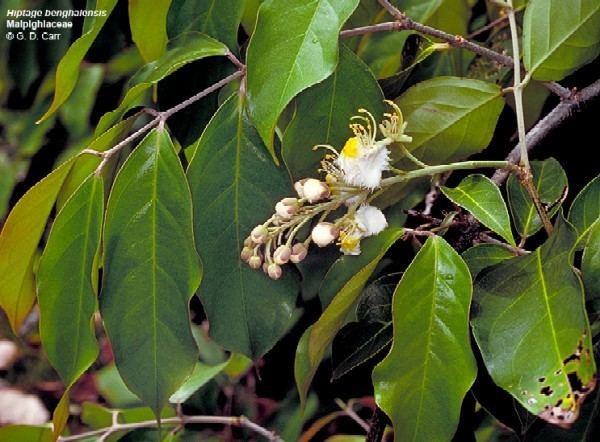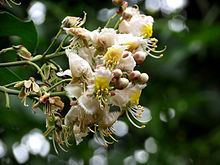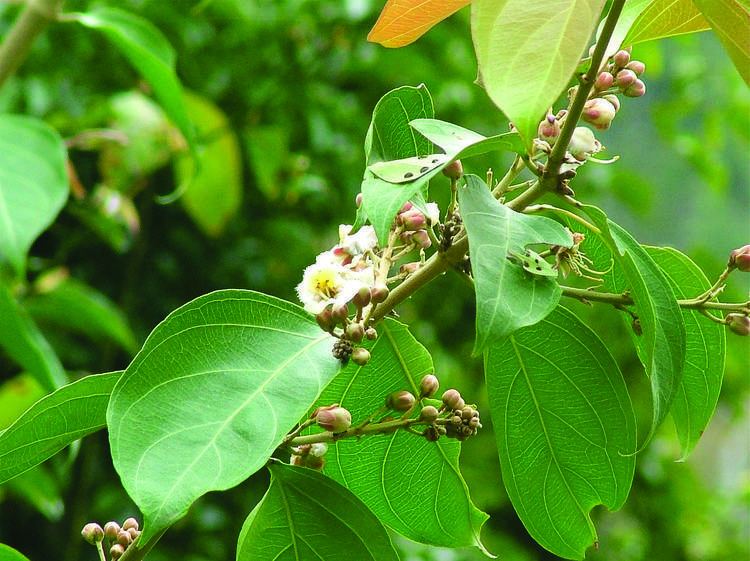Rank Species | Higher classification Hiptage | |
 | ||
Similar Hiptage, Malpighiaceae, Bibasis jaina, Ardisia elliptica, Clidemia hirta | ||
Madhabi lata hiptage benghalensis and mother
Hiptage benghalensis, often simply called Hiptage, is a perennial, evergreen liana native to India, Southeast Asia and the Philippines. Its habitat is variable and prefers climates ranging from warm temperate to tropical. In Hawaii, where H. benghalensis is considered a weed, as it is in Australia, Mauritius and Réunion, it grows from sea level to 1,000 m (3,281 ft). H. benghalensis is cultivated for its white-pink scented flowers.
Contents

Etymology and names

The genus name, Hiptage, is derived from the Greek hiptamai, which means "to fly" and refers its unique three-winged fruit known as "samara". "Benghalensis" is derived from the historic region of Bengal, where it is a native species. Taxonomic synonyms for H. benghalensis include:


H. benghalensis has several vernacular names, including madhavi, vasantduti, chandravalli, madhalata, madhumalati, and madhavilata, "Madhav" being a reference to Lord Krishna. It is known as madhabi lata (মাধবী লতা) or madhoi lata (মাধৈ লতা) in Assamese.
Description

H. benghalensis is a stout, high-climbing liana or large shrub, with white or yellowish hairs on the stem. Its leaves are lanceolate to ovate-lanceolate and approximately 20 cm (8 in) long, and 9 cm (4 in) broad; petioles are up to 1 cm long. It has scandent branches up to 5 m (16 ft) high.
H. benghalensis flowers intermittently during the year, and produces fragrant flowers borne in compact ten-to-thirty-flowered axillary racemes. The flowers are pink to white, with yellow marks. Fruits are samaras with three spreading, papery oblanceolate to elliptic wings, 2–5 cm long, and propagate via wind or by cuttings.
Range
Hiptage benghalensis is a native of India, Southeast Asia and the Philippines. It has been recorded as a weed in Australian rain forests and is invasive in Mauritius, Réunion, Florida and Hawaii where it thrives in dry lowland forests, forming impenetrable thickets and smothering native vegetation. The Florida Exotic Pest Plant Council (FLEPPC) listed H. benghalensis among Category II plants in 2001, which are species that have shown a potential to disrupt native plant communities.
Uses
H. benghalensis is widely cultivated in the tropics for its attractive and fragrant flowers; it can be trimmed to form a small tree or shrub or can be trained as a vine. It is also occasionally cultivated for medicinal purposes in the alternative medicine practice ayurveda: the leaves and bark are hot, acrid, bitter, insecticidal, vulnerary and useful in the treatment of biliousness, cough, burning sensation, thirst and inflammation; it also has the ability to treat skin diseases and leprosy.
